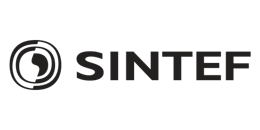Work Package
dTHOR is divided into 11 management and technical work packages to enable an innovative development of a predictive ship structural health monitoring system.

/ WP1
WP1 plays a central role in guiding the consortium through the project’s lifespan. Its primary objective is to provide comprehensive guidance, to organize meetings ensuring effective collaboration between the partners and efficient progress. This work package also entails delivering risk and opportunity analyses, and pursuing technical and innovation management activities.

/ WP2
The objective of this work package is to develop a comprehensive and consolidated requirement specification for Ship Structural Health Monitoring for European Navies, considering the operational scenarios and requirements of the stakeholders, as well as the relevant findings throughout dTHOR conduct. This entails collecting and analyzing stakeholders’ needs to define a KPI for each project deliverable for reaching the different milestones that satisfies all the parties involved. Additionally, this work package includes designing and consolidating the operational procedures and scenarios for dTHOR use cases and demonstrator.

/ WP3
WP3 foresees the development of digital standards onboard of European Ships for SSHM software and hardware. This entails determining the requirements applicable to digital framework and data (collection, analysis and reporting), designing the digital framework and the networking infrastructure of the Health monitoring subsystem, providing a secure framework taking into account the cybersecurity requirements, and working on an interoperable interface between the SSHM subsystem and the Digital Ship.

/ WP4
The modelling work package focuses on developing effective and reliable reduced order models (ROMs) and hybrid analysis and modelling (HAM) techniques for the selected SSHM applications. This work package also includes the development of high fidelity structure and material modelling techniques. The methods for optimal sensor replacement, ship transfer functions and ship structure vibrations modelling will be the object of analyses that aim to verify and enhance the existing technologies.

/ WP5
Focused on sensors, the core development envisioned under this work package is the design and selection of the most suitable sensors with regards to SSHM, which should be equipped with the technologies that enable a specific and instant detection of any deterioration in the processes or any failure mechanism at all times. WP5 is crucial as its results will serve the work of the next work packages (WP6-WP10). Also, it includes the provision of tools for assessing the acoustic signature of the vessels.

/ WP6
With the aim to transition from traditional time-based scheduled maintenance to condition-based maintenance and to reduce lifecycle costs and improve the reliability of naval vessels, the vision behind this work package is to conceptualize and develop a full Condition Based Maintenance (CBM). This includes defining the CBM system, analyzing the existing and emerging technologies and methods in order to reach the optimum performance for the CBM system, predicting the fatigue load and damage scenarios, studying the possibilities to develop a subsystem and to use artificial intelligence to improve the system’s efficiency.

/ WP7
Under WP7, the focus is laid on processing and preventing the damage, which leads to different assessments of damage detection and diagnosis using human and/or sensor inputs, of residual strength of a damaged component and on the progresses of a potential damage (which includes fatigue assessment and damage progression assessment), and finally of possible predictions of damage stability and progressive flooding. All of these outputs will nourish the elaboration of a forecast for mission restrictions and survivability.

/ WP8
WP8 focuses on the identification of local or global structural vibrations that contribute to the vessel’s hydrodynamic signature and establish realistic tools to aid operators in visualization and prediction with the result of avoiding recognition/positively identification by “red forces”. This work will also enable the identification of the main sources affecting the acoustic signature of the ship, and finding potential mitigation measures of airborne noise radiation.

/ WP9
The main objective of WP9 is to increase the accuracy of the weapon systems in operations. This will be done notably by evaluating various sources of error and developing solutions to reduce or equalize them.

/ WP10
WP10 serves as the backbone of dTHOR project, responsible for the validation of the methods and technologies developed across the other work packages. The primary objective is to demonstrate and verify that all the solutions can be integrated in a scalable SSHM system as defined in WP3. Key tasks within this work package include the establishment of a list of validation requirements, arranging an access to physical and digital resources needed to do the validation, working on the integration of the system, and proceeding with the validation tests.

/ WP11
WP11 plays a vital role in promoting awareness, facilitating effective communication, and disseminating project outcomes to relevant stakeholders, within the EU, national MoDs, and within the scientific and industrial communities. This work package focuses on ensuring that dTHOR information, achievements, and results are effectively communicated to both internal and external audiences, maximizing visibility and impact. The activities under this work package also include the topic of standardization, with the aim to facilitate the acceptance and adoption of the developed solutions by the market one the one hand, and on the other to give feedbacks to the standardization authorities based on the results of dTHOR.

